Trainspotters looking for a place to live will love the vintage appeal of these homes on wheels for sale across Australia right now.
Plenty of properties listed for sale on realestate.com.au come with the added bonus of a converted train carriage, with these versatile and durable structures adapted for a variety of uses.
One impressive property in Ewingsdale, just outside of Byron Bay, features a 50-year-old railway carriage that’s been renovated to preserve its heritage.
It was once an infamous “Red Rattler” carriage but has been modernised to serve as boutique lodgings for friends and family.
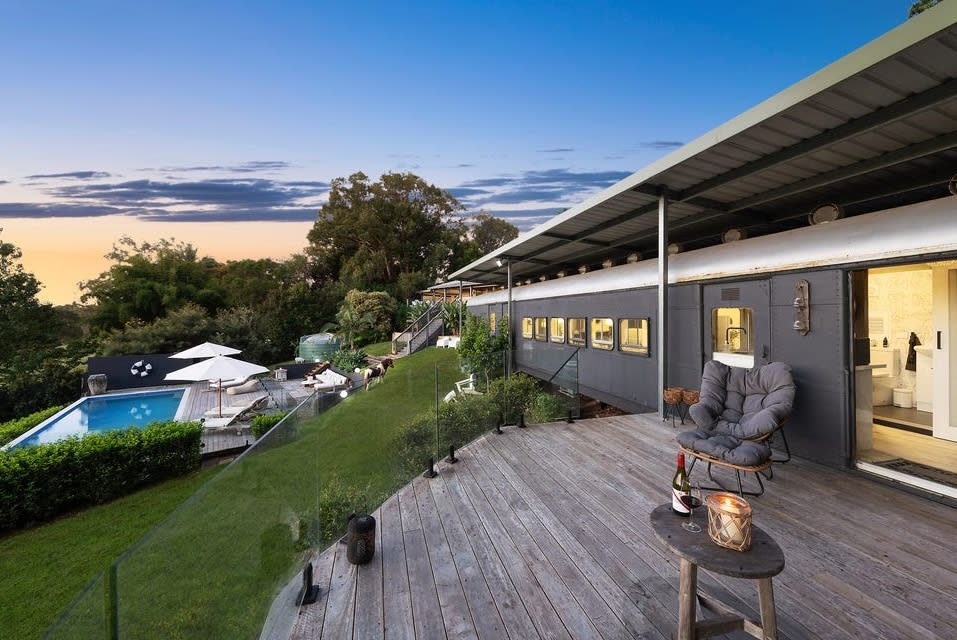
The vintage carriage is parked on a slope, providing breathtaking hinterland views over the five-acre block all the way to Mt Warning. Picture: realestate.com.au/buy
“It’s been here for at least 10 years,” said owner Dean Carroll. “It came up from Dubbo and the person who put it on the site actually worked in the rail yards.”
“Whenever we have anyone come, even if it’s just an electrician or someone coming to read the water meter, everyone just goes straight to the train.”
The carriage is described in the listing as “the ultimate in Byron-style guest accommodation”, and has been restored and furnished to echo the romance of the golden age of rail travel.
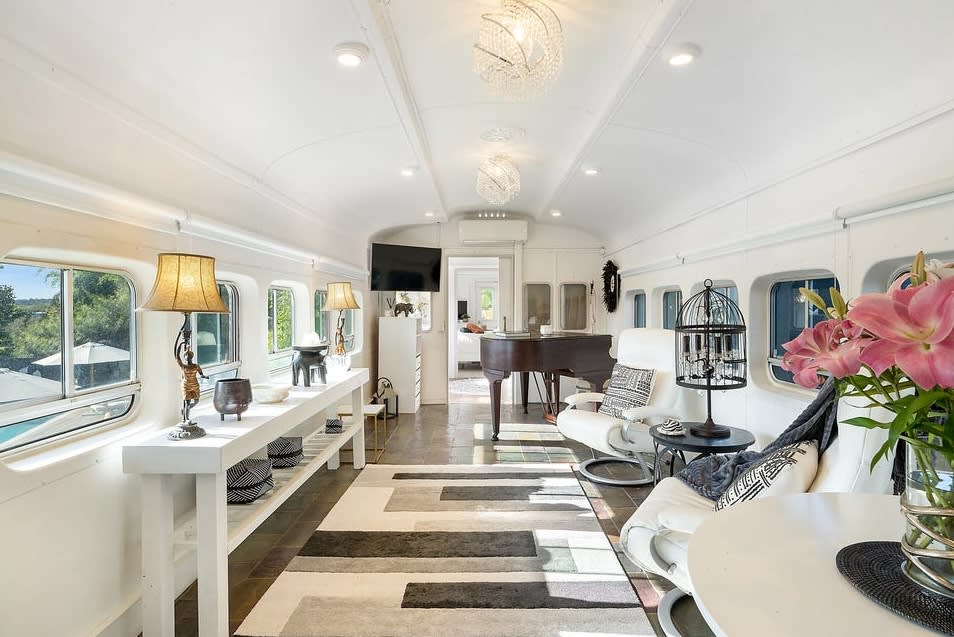
The interior of the carriage has been modernised yet retains its character. Picture: realestate.com.au/buy
It’s divided into five separate compartments that serve as rooms, with a bedroom at one end, a living space in the middle, and storage areas at the other end.
“The back part we’ve left as is,” Mr Carroll said. “It’s got one of the old original seats in it, and some of the old signage.”
It’s also fitted with a timber deck, which makes the perfect spot to enjoy a sundowner.
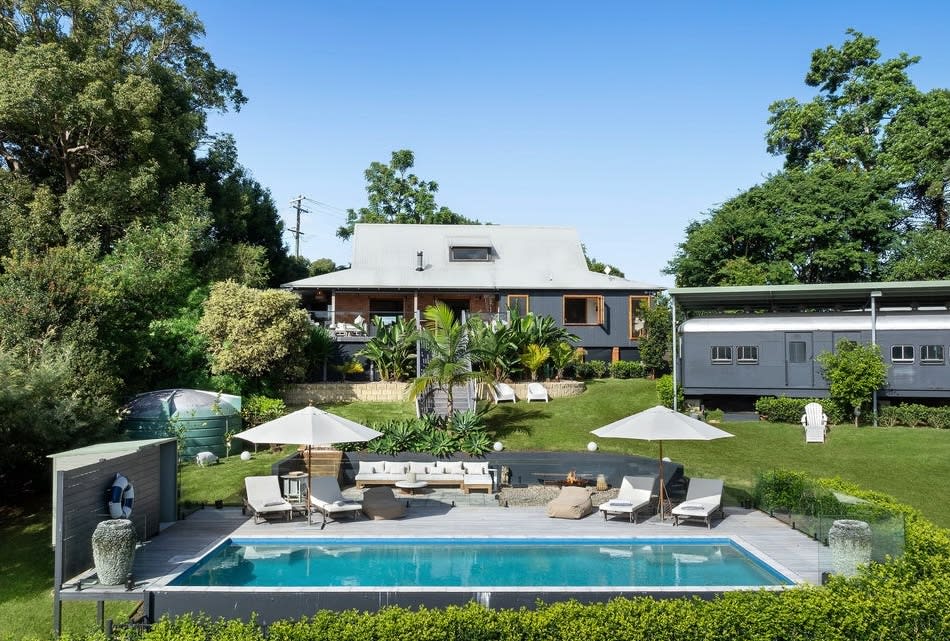
The train carriage forms part of a resort-style acreage. Picture: realestate.com.au/buy
The house itself is magnificent too, with three bedrooms across two levels, beautifully renovated interiors and a resort-style pool.
Real estate agent Peter Randall of McGrath Byron Bay, who is selling the property alongside principal Will Phillips, said the scale and finish of the property made it an exceptional offering.
“To have that size acreage so close to Byron does make it pretty special,” he said. “Sitting on that deck when the afternoon sun hits, it’s a special place to be.”
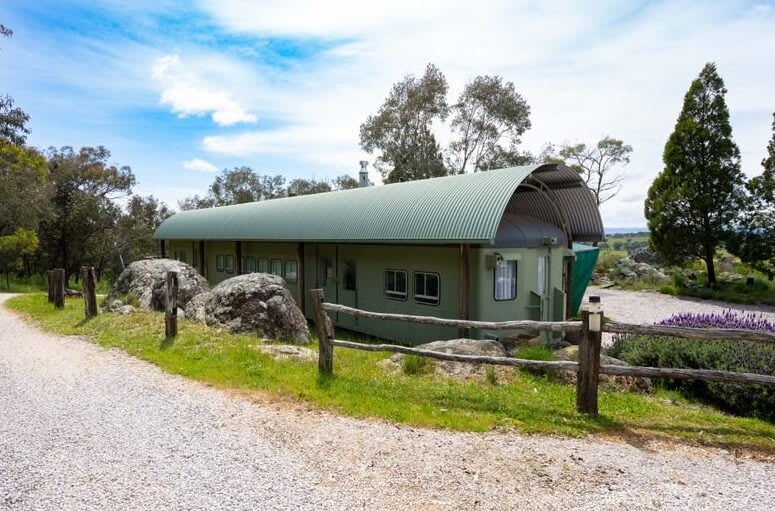
This railcar on a property at Molong in NSW was once part of Sydney’s train network.
Decommissioned train carriages are a popular way to instantly add extra structures to a property, with multiple homes listed on realestate.com.au featuring former coaches or freight cars.
A 33-hectare property at Molong in the NSW central west with a three-bedroom house, vineyard and olive grove also has a former Sydney train carriage fitted out with a wood-burning fireplace, toilet, deck and water tank.
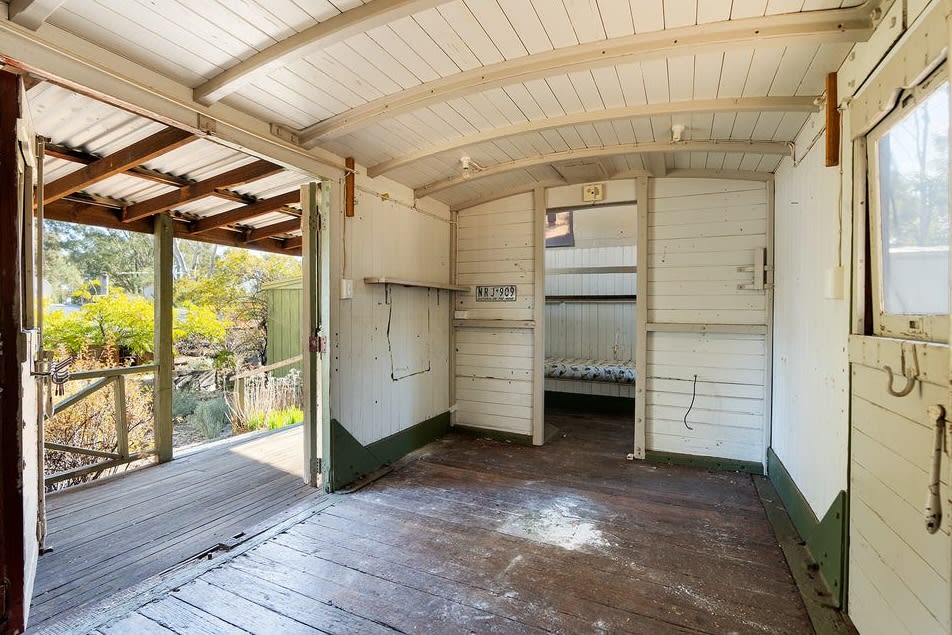
This timber carriage on a property at Guildford in Victoria provides a ready-made cabin that can be adapted for multiple uses.
Meanwhile, a leafy property at Guildford near Castlemaine in Victoria includes an older timber railway car converted into a rustic cabin that could serve as guest accommodation or a studio.
One property at Tuerong on the Mornington Peninsula includes one railcar serving as a retail outlet for the surrounding farms, as well as an iconic W-Class Melbourne tram.
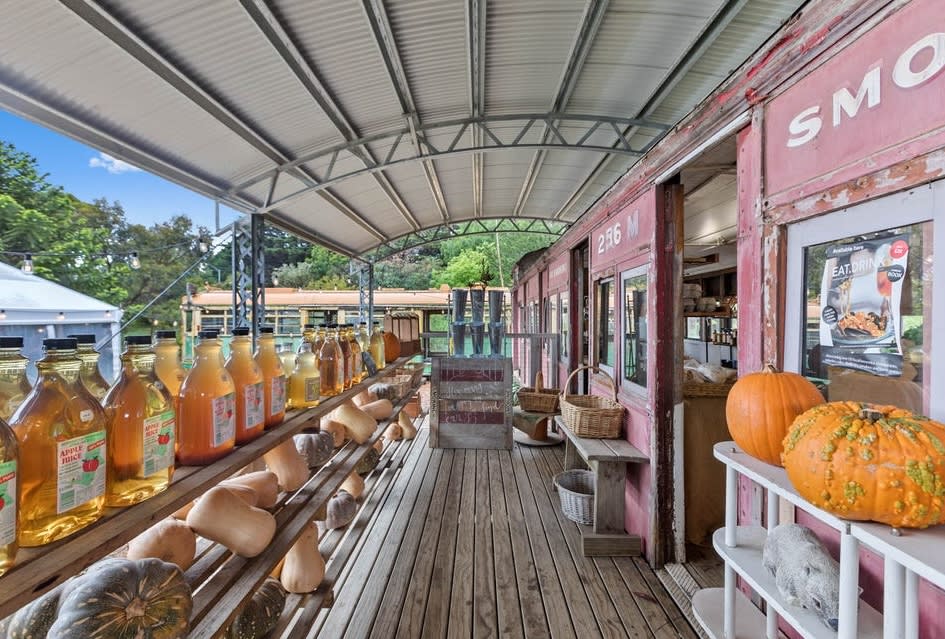
Local farmers sell their produce in this renovated carriage on Benton Rise Farm on the Mornington Peninsula.
The property is described in the listing as a “beloved tourist attraction” and also features a petting farm, playground, vegetable gardens and aquaponic grow beds, as well as a three-bedroom 1938 California Bungalow and two freestanding cabins.
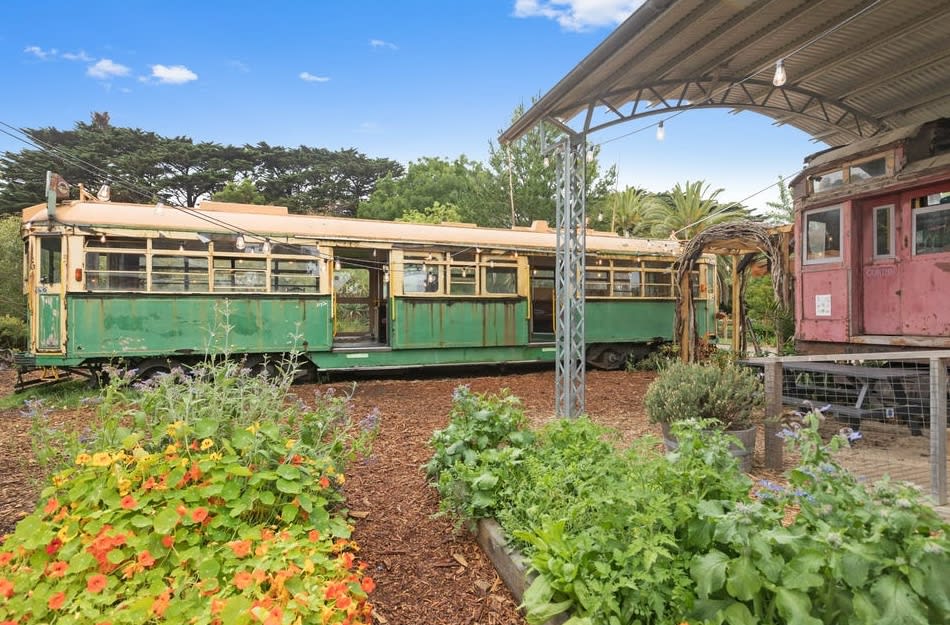
The property also features a retired Melbourne tram.
The phenomenon isn’t confined to just rural properties, with multiple suburban homes incorporating carriages as outbuildings.
A three-bedroom house in Hilton in Perth’s southwest includes a timber railcar in the backyard that has been extended with a kitchen and bathroom to form a self-contained studio.
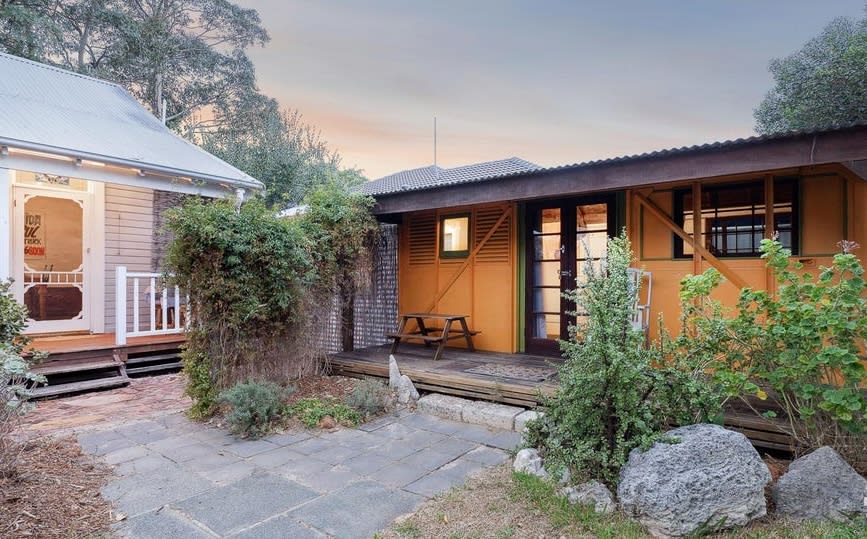
This backyard train carriage could serve as a self-contained teen retreat.
A four-bedroom house in Belrose in Sydney’s north includes a railway carriage as part of an outbuilding that has been preserved in the same condition it left the rails, with seats and luggage racks included.
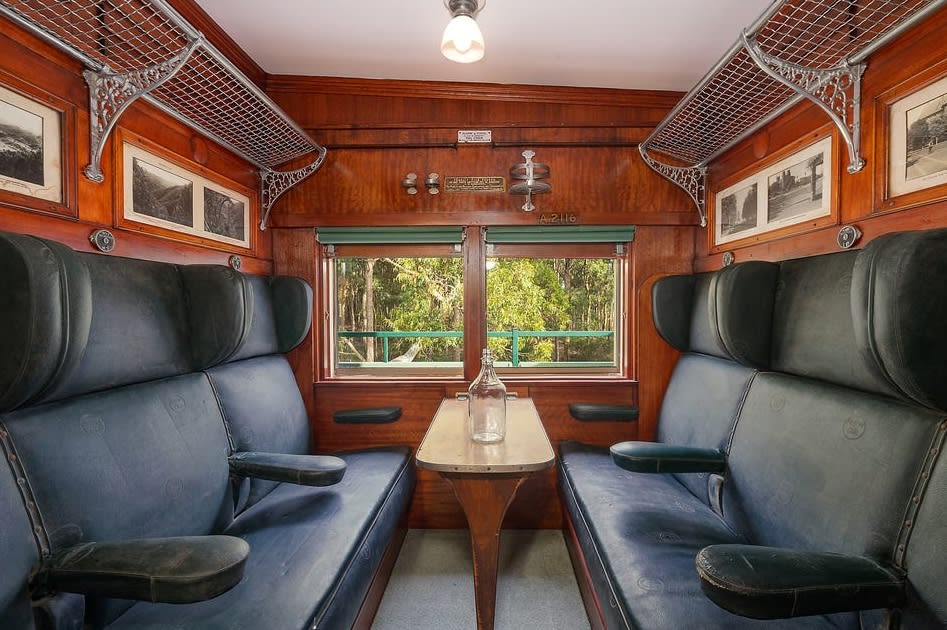
While most residential train carriages have been converted, this one has been left in original condition.
Train carriages can offer a more affordable form of instant accommodation than alternatives like tiny houses or granny flats, according to Mario Mencigar of Australian Train and Railway Services, a company that specialises in the restoration and relocation of railway stock.
“You’d be surprised how many are out there,” Mr Mencigar said. “We scatter them all over the countryside.”
“A lot of people do it as a weekender or craft room. Some councils use them as offices or information rooms.”
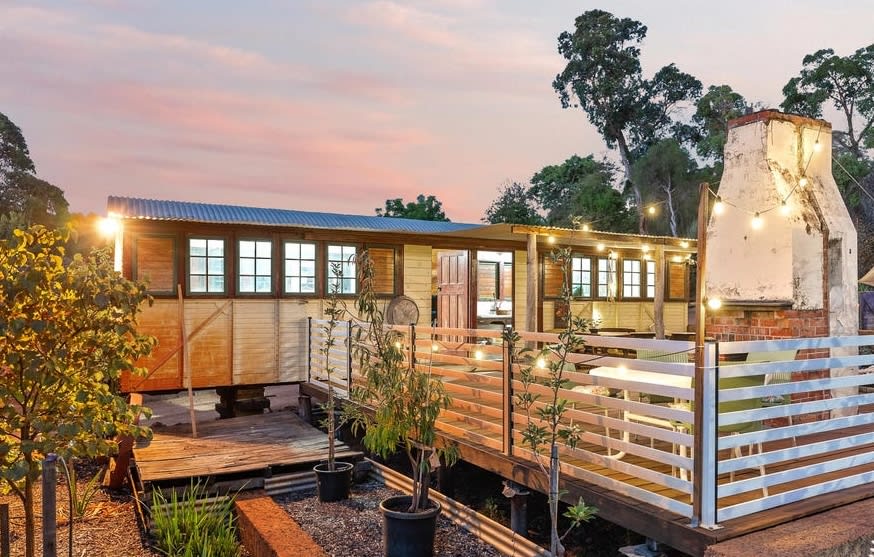
This timber railcar forms part of an entertaining area on a property at Lesmurdie Perth’s outer eastern suburbs.
He said the popularity of railway carriages has fluctuated over the years, often based on the economic climate.
“You do get a bit of a roller coaster scenario, depending on the market,” he said. “If the budget is getting tight, people look at railway carriages instead of tiny houses.”
The former coach builder and panel beater has been restoring and relocating carriages since the 1980s, using specialised trucks and cranes to transport the carriages by road.

Picture: Australian Train and Railway Services
He said the cost of a basic carriage started at about $10,000, with pricing dependent on the level of restoration and the rarity of the carriage.
Transport costs vary depending on the carriage’s size, site and the distance, but said moving one locally could cost between $5000 and $7000.
At the other end of the scale, a recent railcar relocation from Mr Mencigar’s base of operations in Kandos in the NSW central tablelands to the Barossa Valley in South Australia required two trips to transport the carriage separate from the wheels and rails it would sit on, costing about $21,000 all up.
However, he said this was “very affordable” compared to tiny homes, which are typically priced from $25,000 to $100,000 or more, and granny flats which cost even more than that to build.
Realestate.COM


Now that’s nice this heaps better seeing these older carraiges going to the scrappers and gas axed!!!
In house crisis seems innovative way of getting affordable housing!